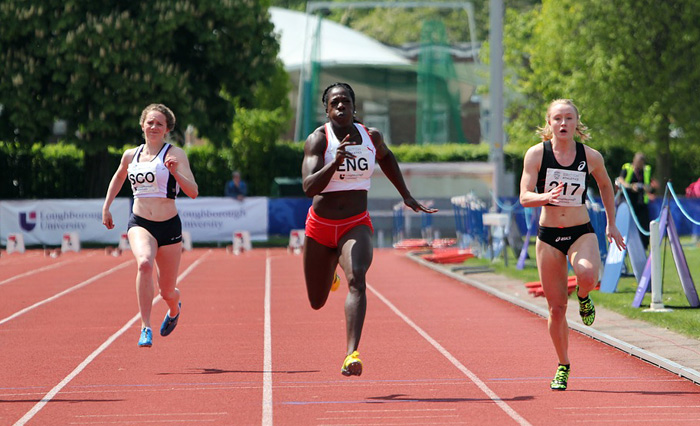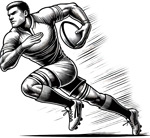Fitness defines the ability to perform physical activity, and encompasses a wide range of abilities. Each sport and activity requires a specific set of skills, and so being fit for a particular sport requires a specific skill set. Being fit for one sport does not necessarily make you fit for another.
 speed is a primary component of fitness
speed is a primary component of fitness Although it is not all clear cut, fitness is generally divided into specific fitness categories or components (listed below), and each can be tested and trained individually.
Fitness Components List
- Body Composition — refers primarily to the distribution of muscle and fat in the body. Body size such as height, lengths and girths are also grouped under this component.
- Muscular Strength — the ability to carry out work against a resistance.
- Muscular Endurance — the ability to repeat a series of muscle contractions without fatiguing.
- Power — the ability to exert a maximal force in as short a time as possible, as in accelerating, jumping and throwing implements.
- Speed / Quickness — the ability to move quickly across the ground or move limbs rapidly to grab or throw.
- Agility — the ability to quickly change body position or direction of the body.
- Flexibility — the capacity of a joint to move through its full range of motion, which is important for execution of the techniques of sports.
- Balance and Coordination — the ability to stay upright or stay in control of body movement, an important component of many sports skills.
- Cardiovascular Endurance — or aerobic fitness, stamina, is the ability to exercise continuously for extended periods without tiring.
- Motor Skill — gross motor skills are the basic skills developed when young, which can be developed upon with specific sports skills training.
Related Pages
- What sport requires the greatest endurance, speed, agility? See the sports ranking for fitness components.
- Fitness Tests for each component of fitness.
- Ways Competitive Athletes Can Optimize Their Daily Routine
- Sport Science Disciplines
- Factors of Success in Sports
- Basic Anatomy and Physiology related to fitness training.
- Monitoring fitness changes


 Upcoming Events
Upcoming Events